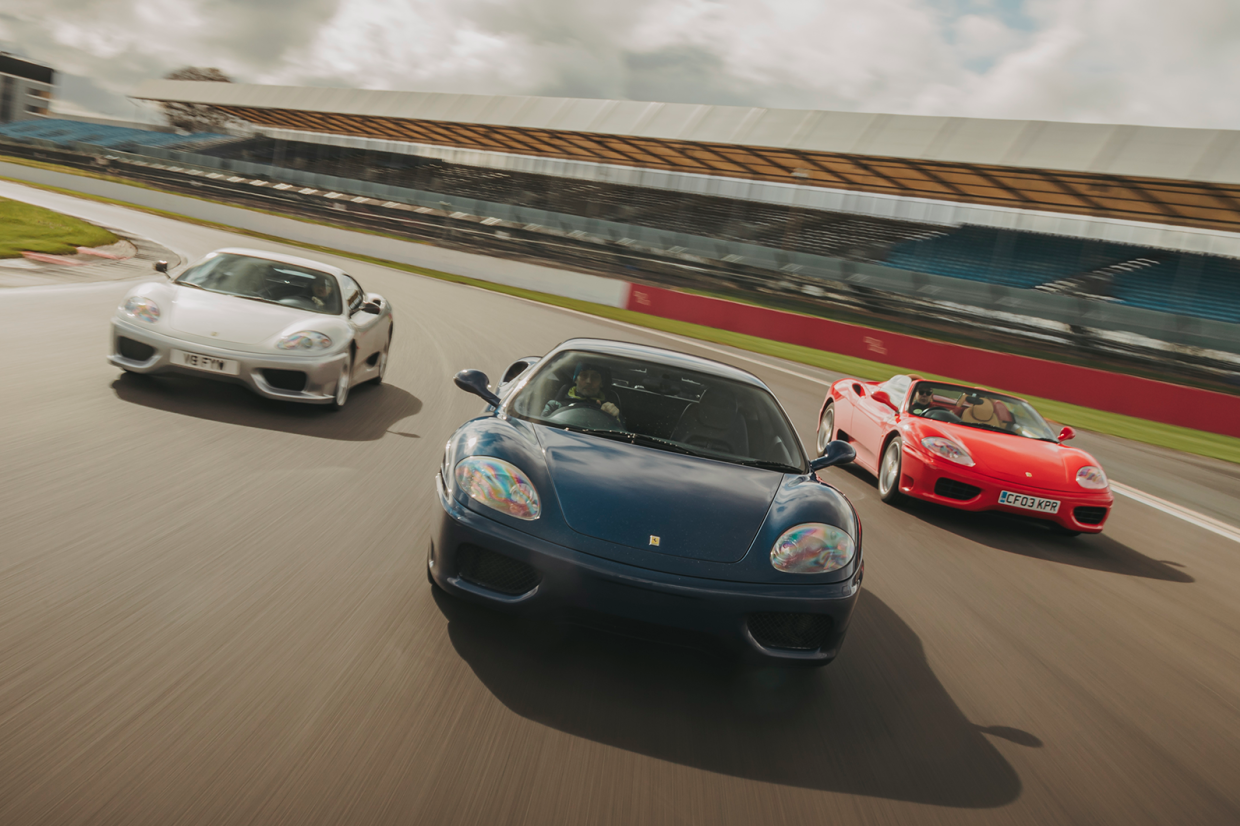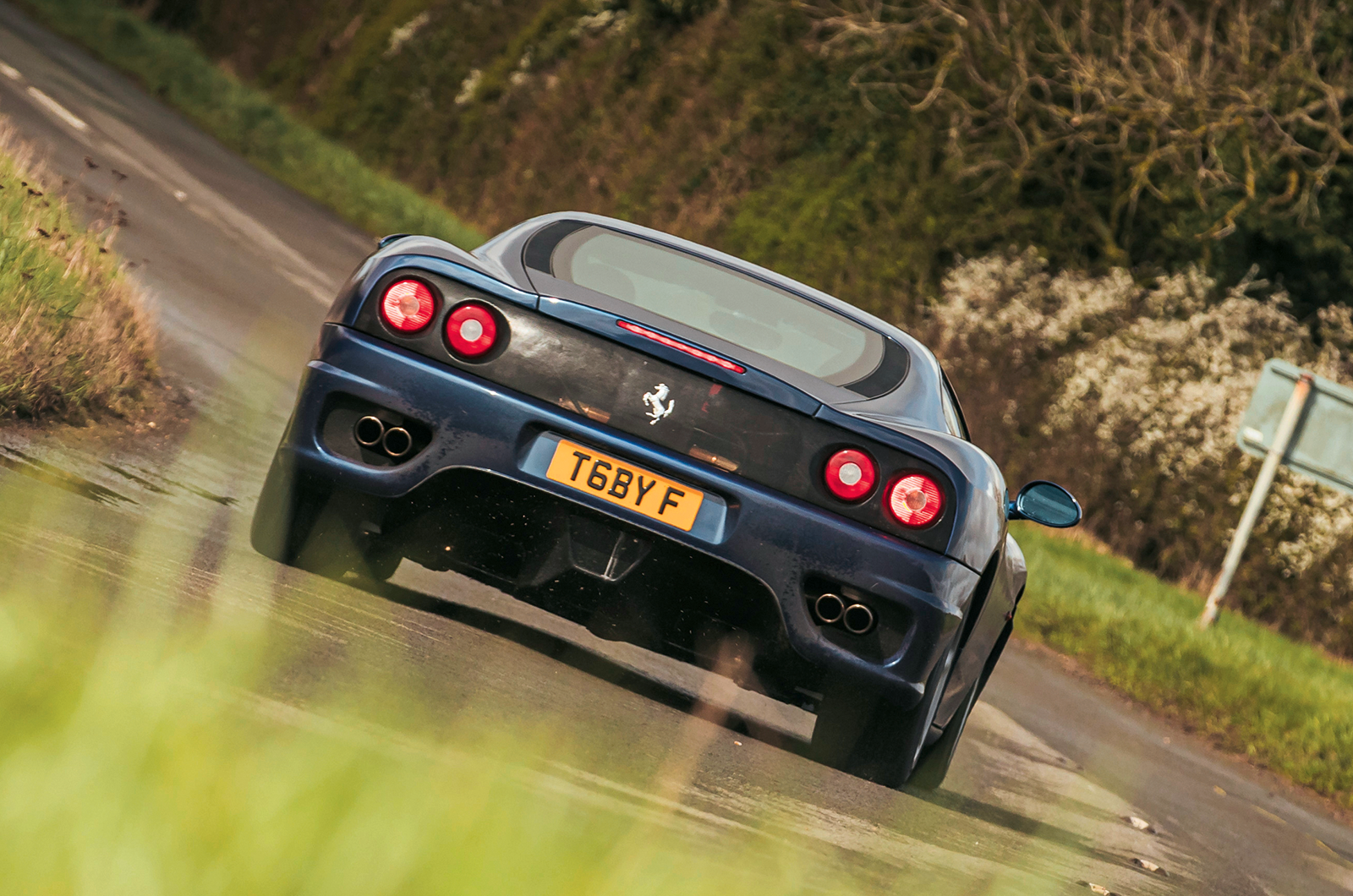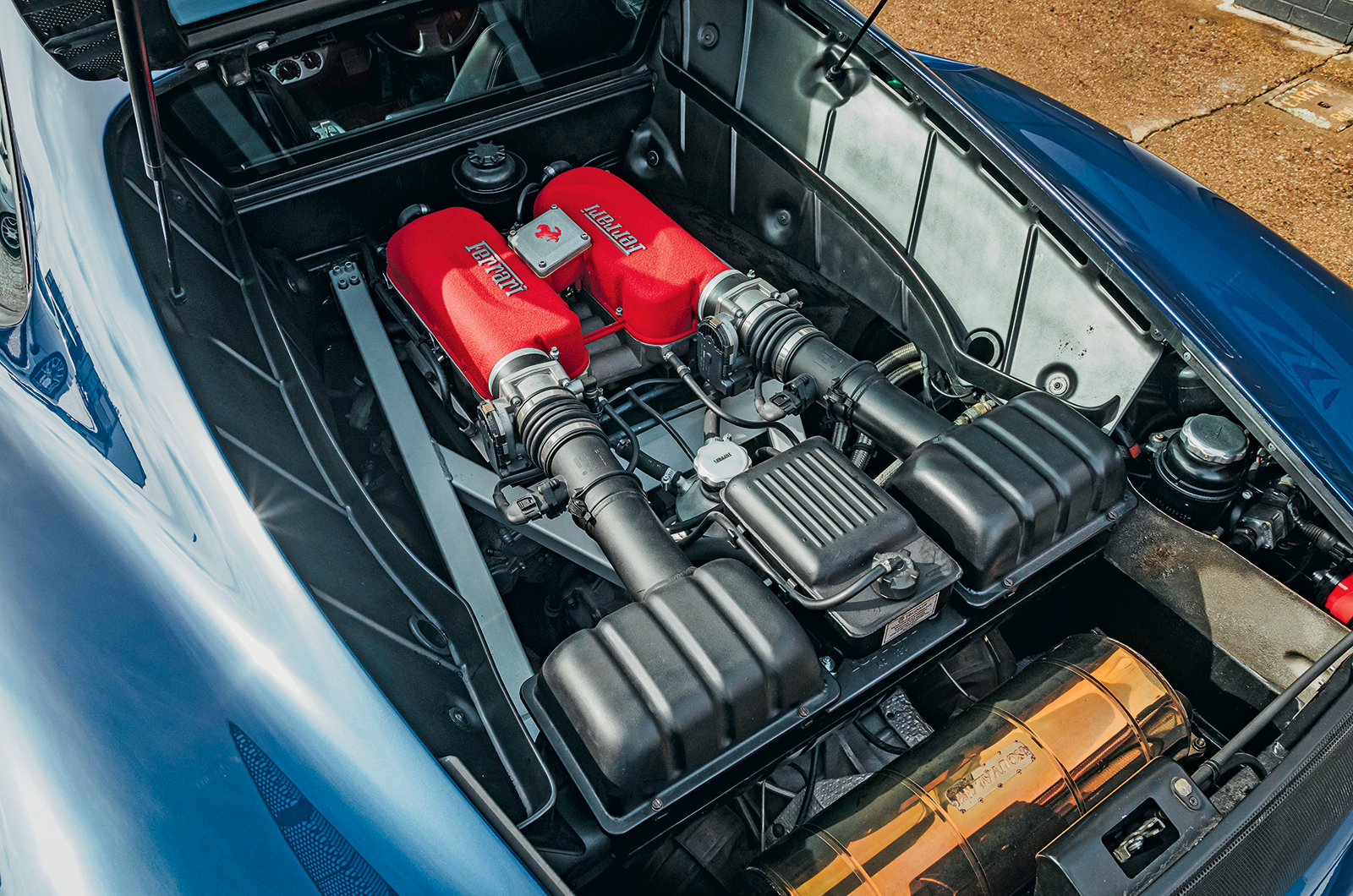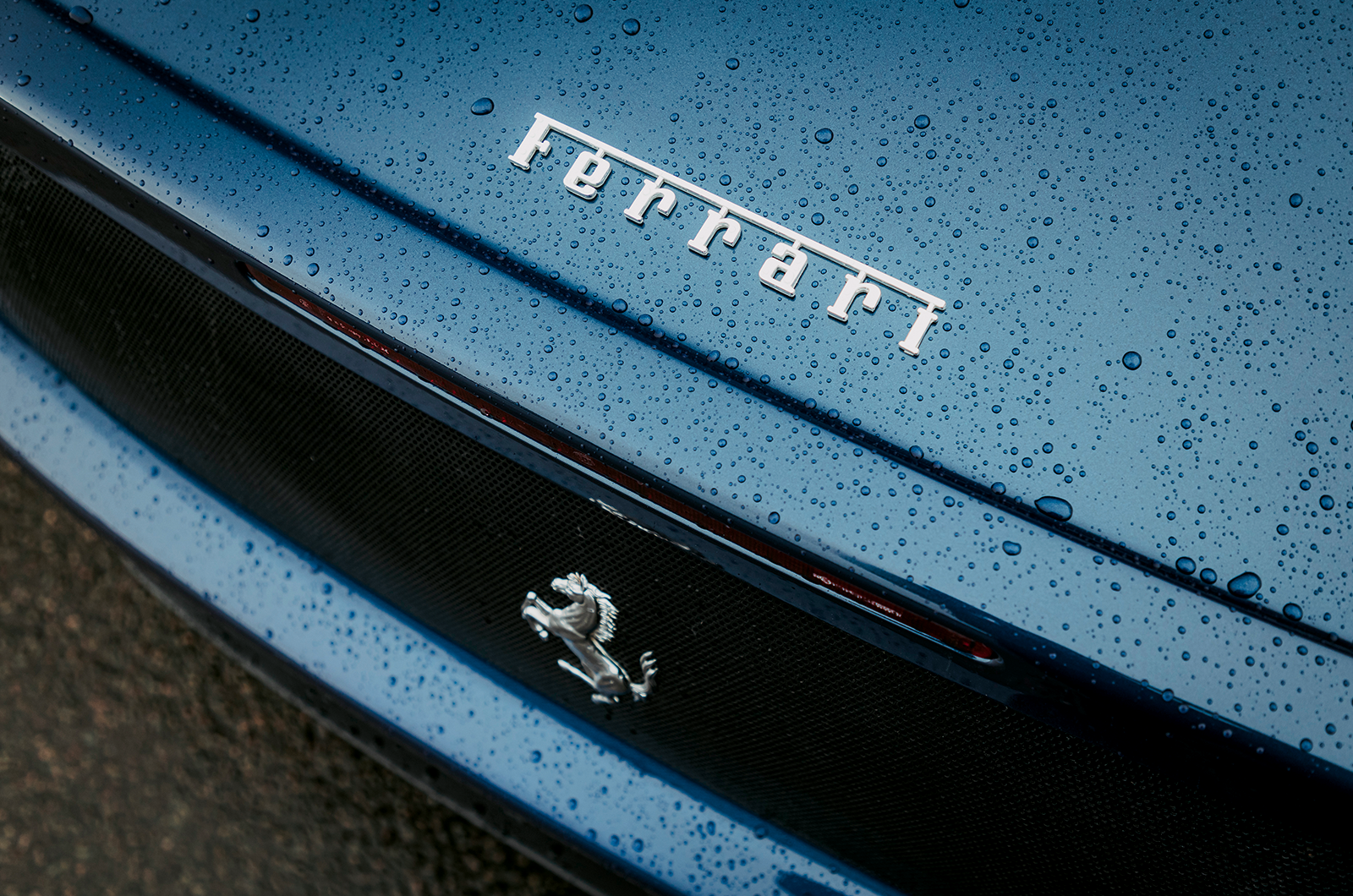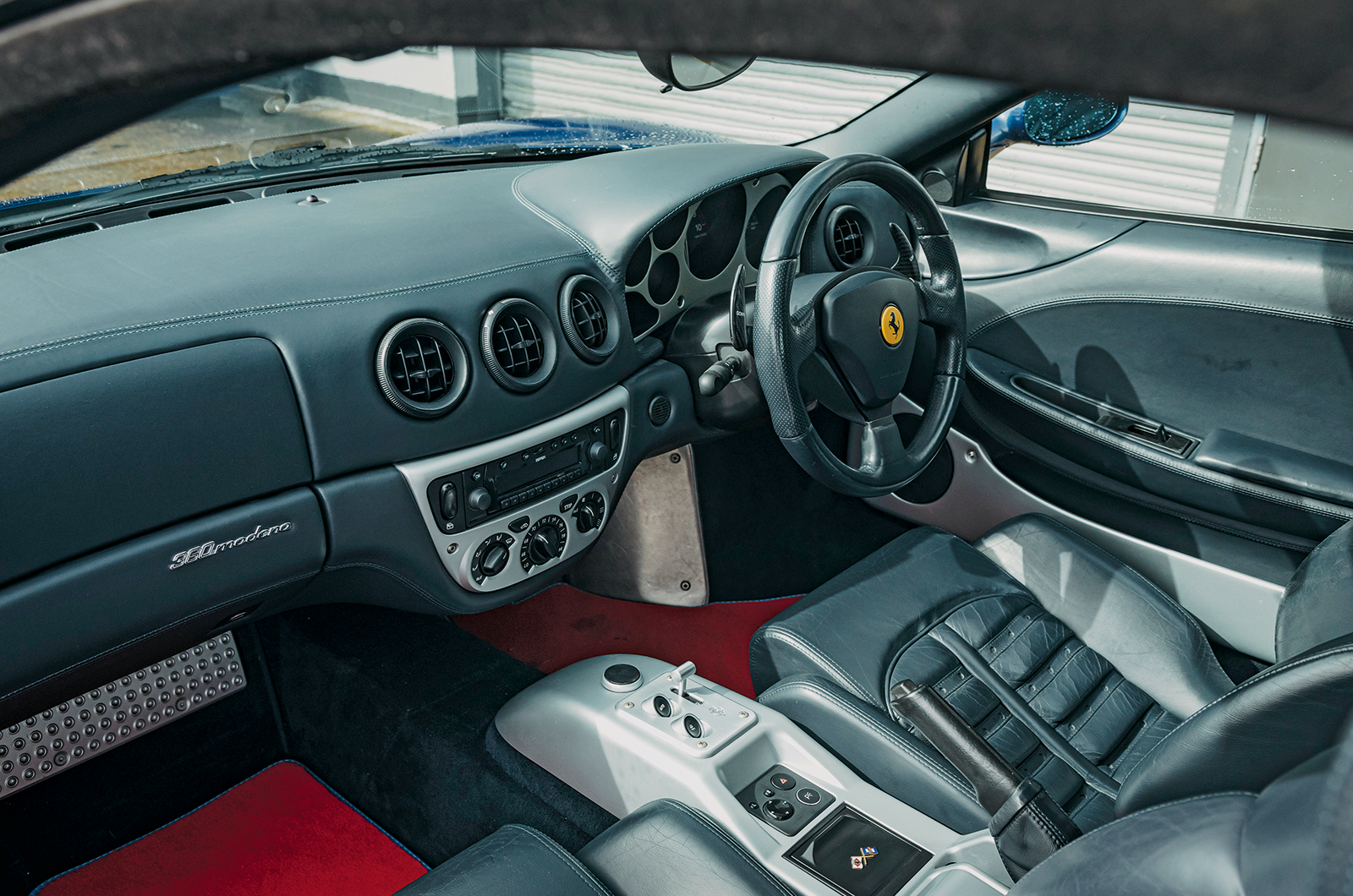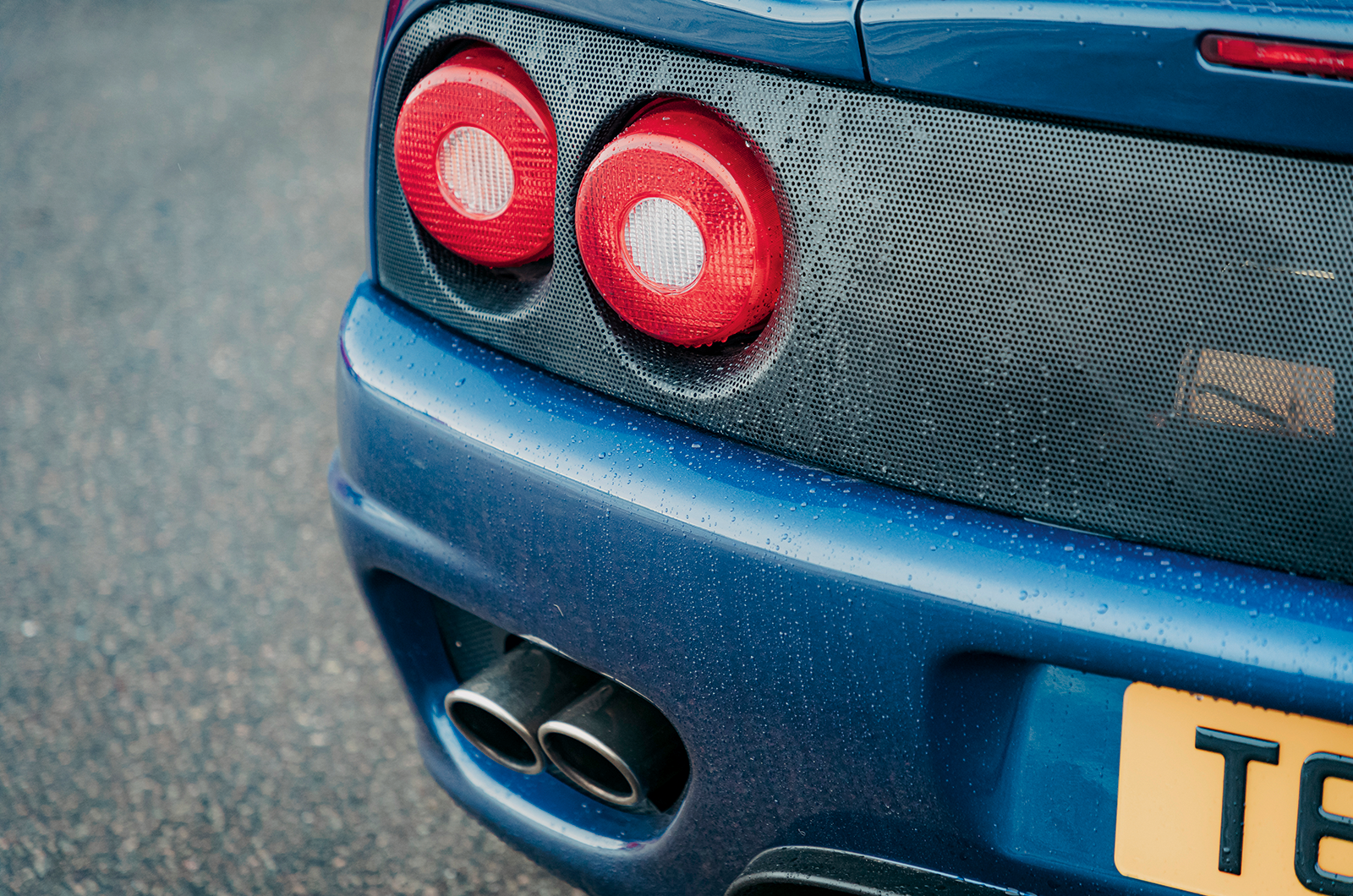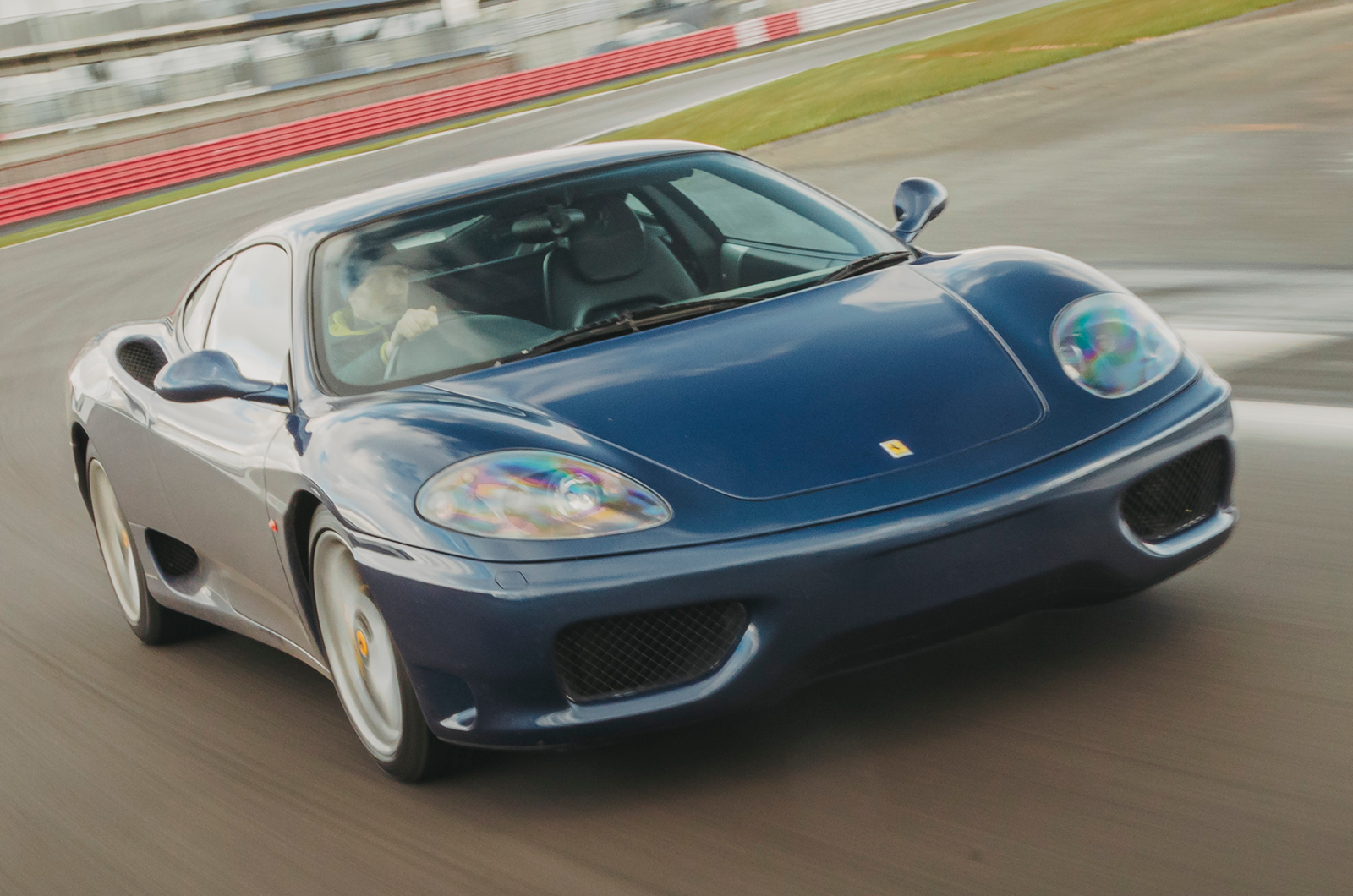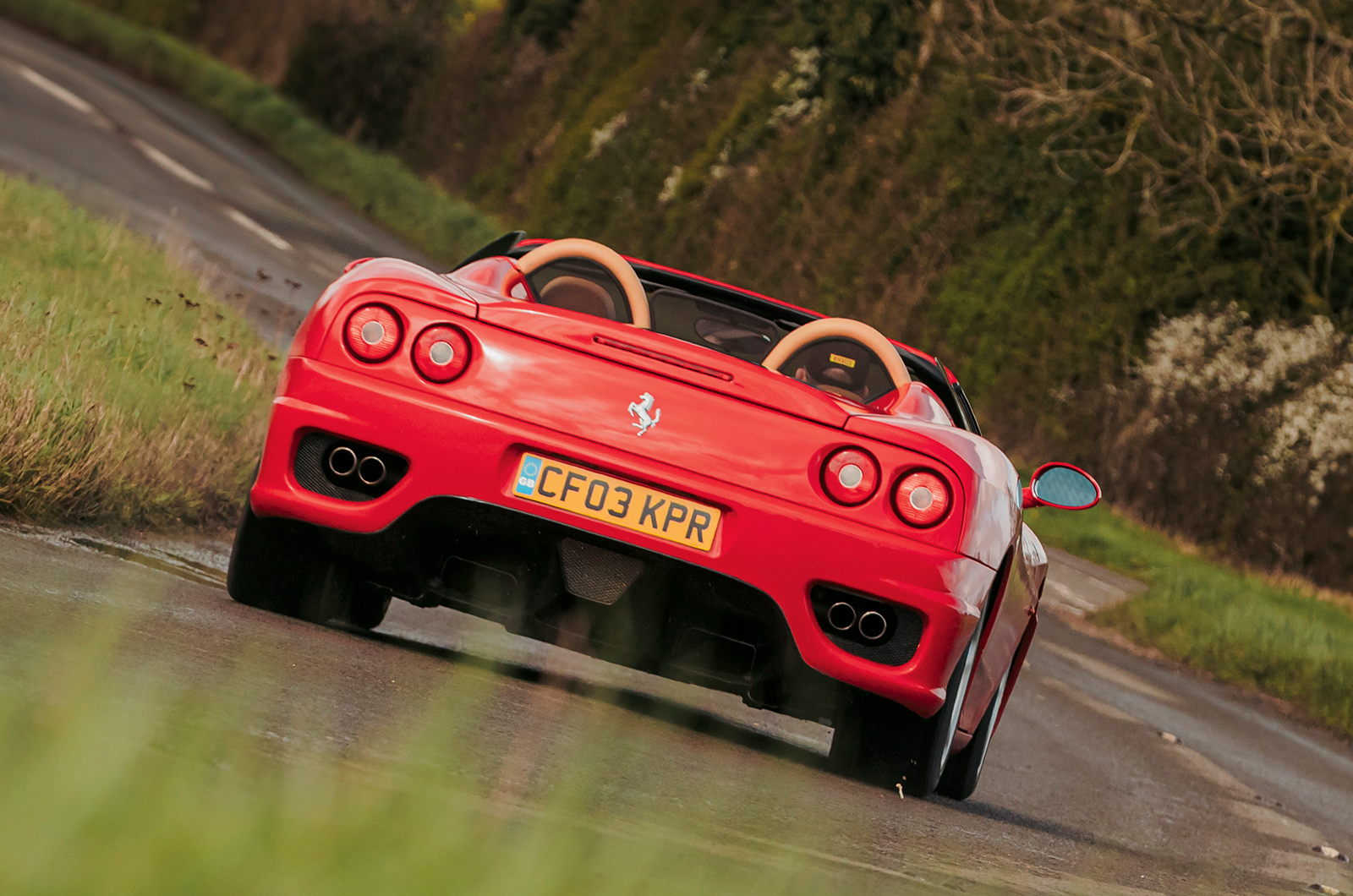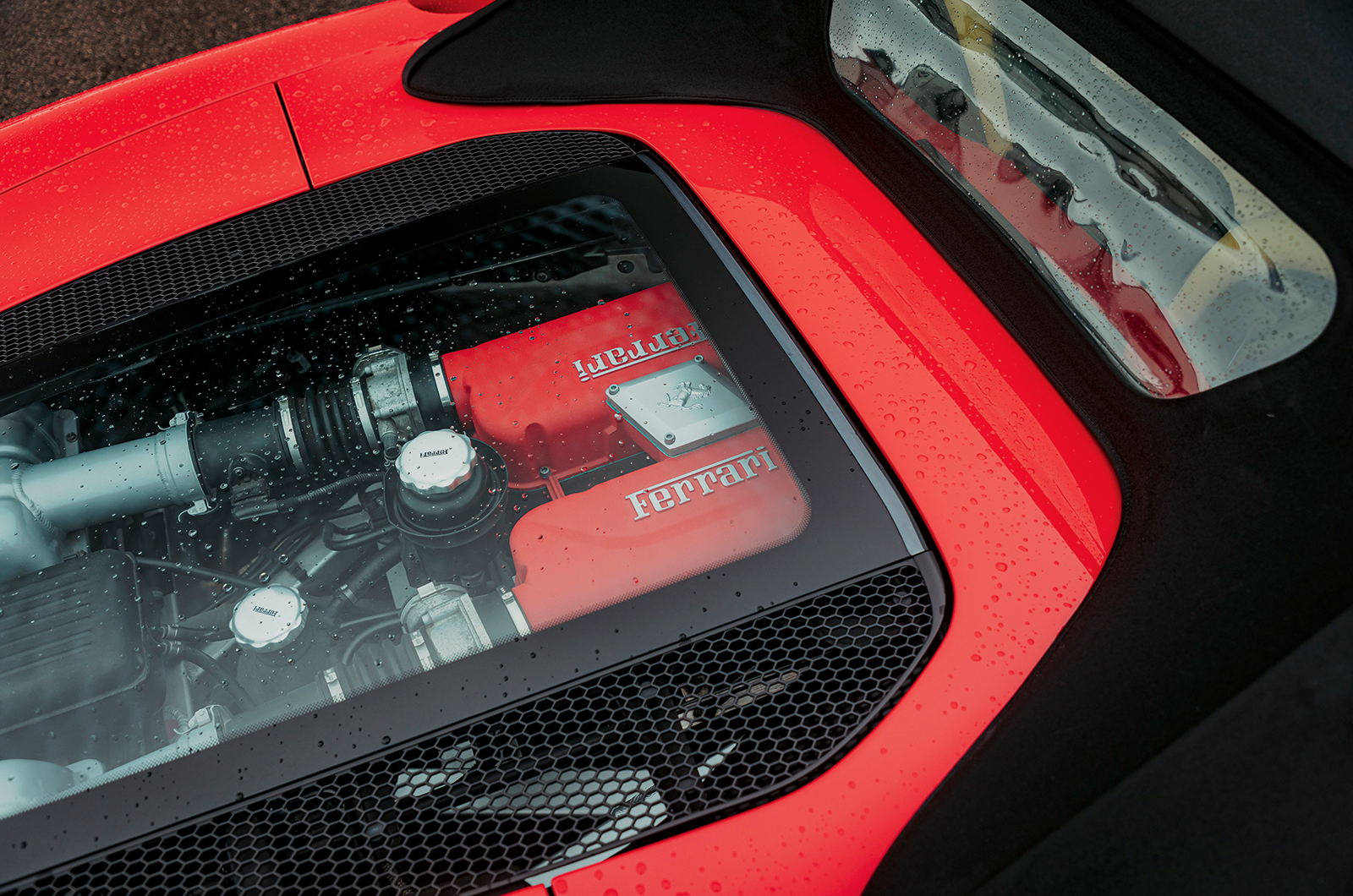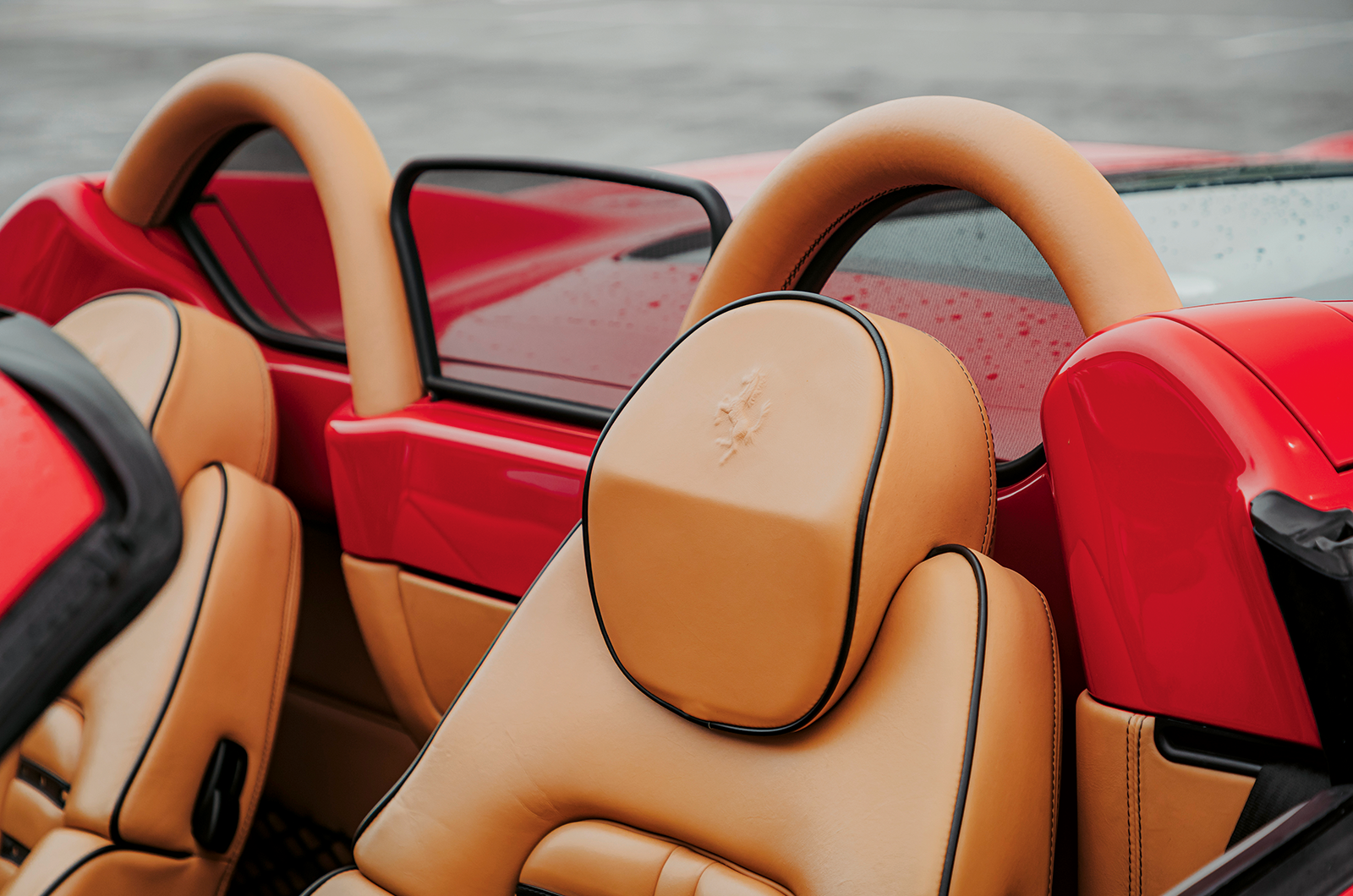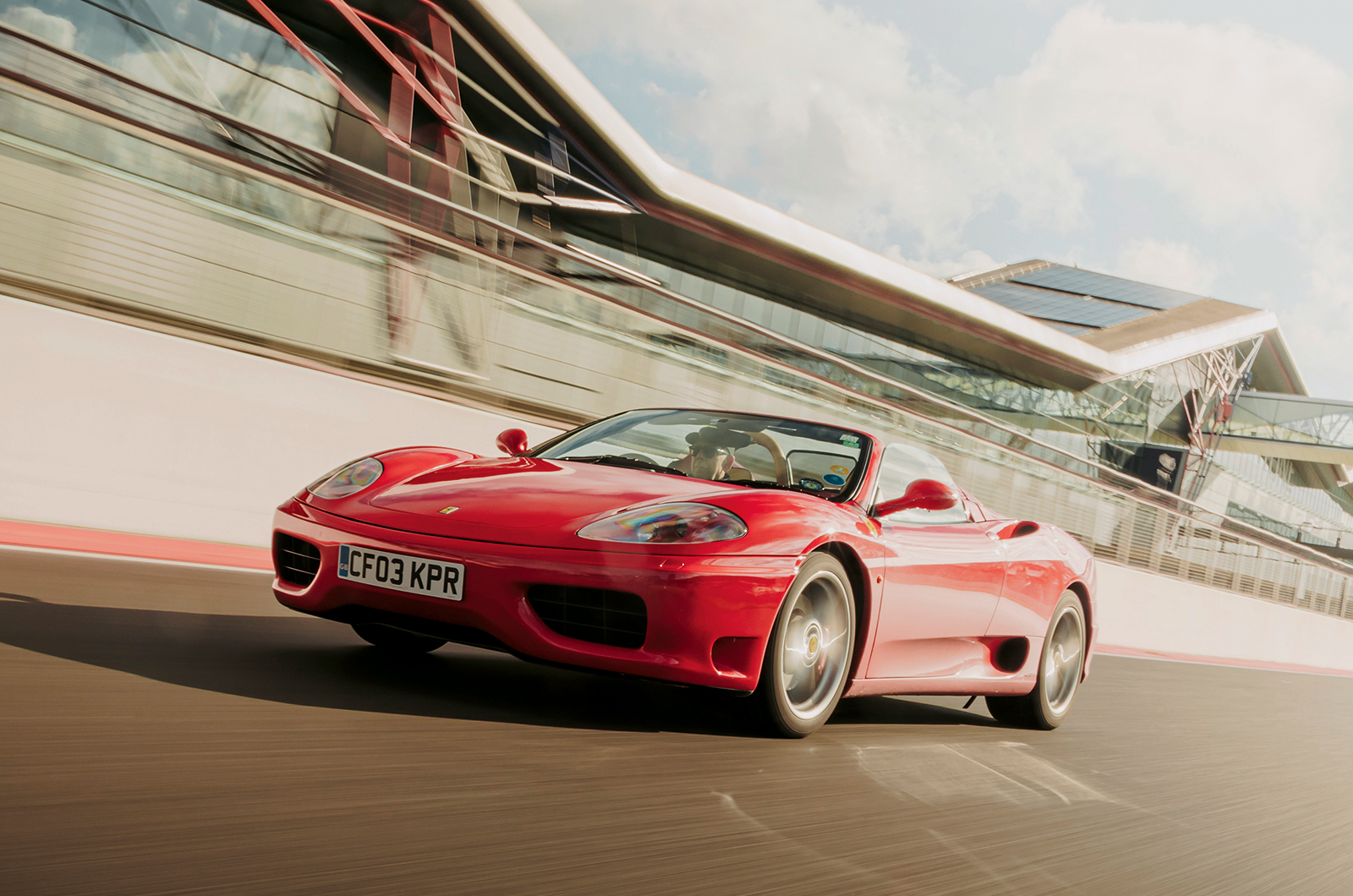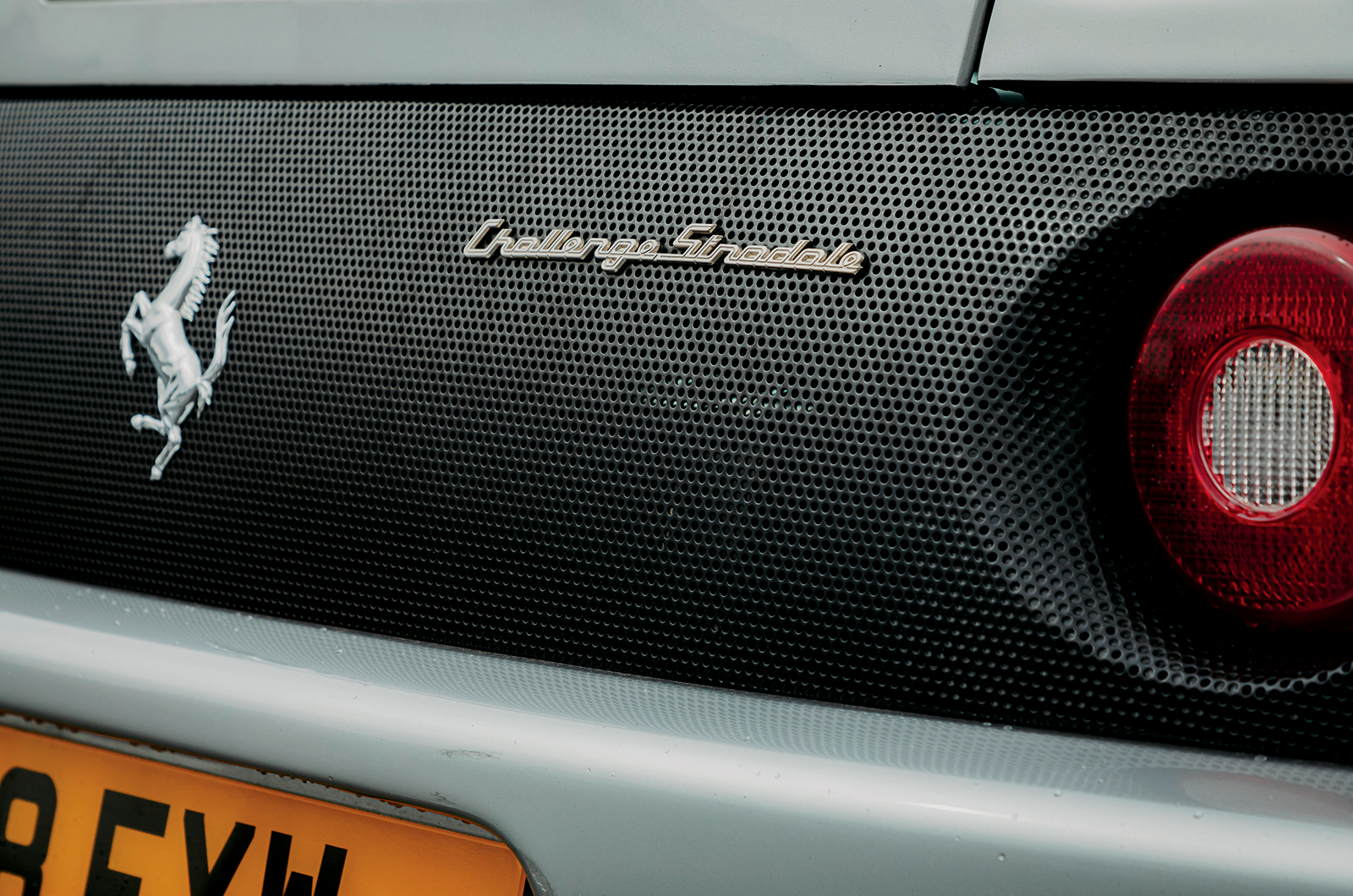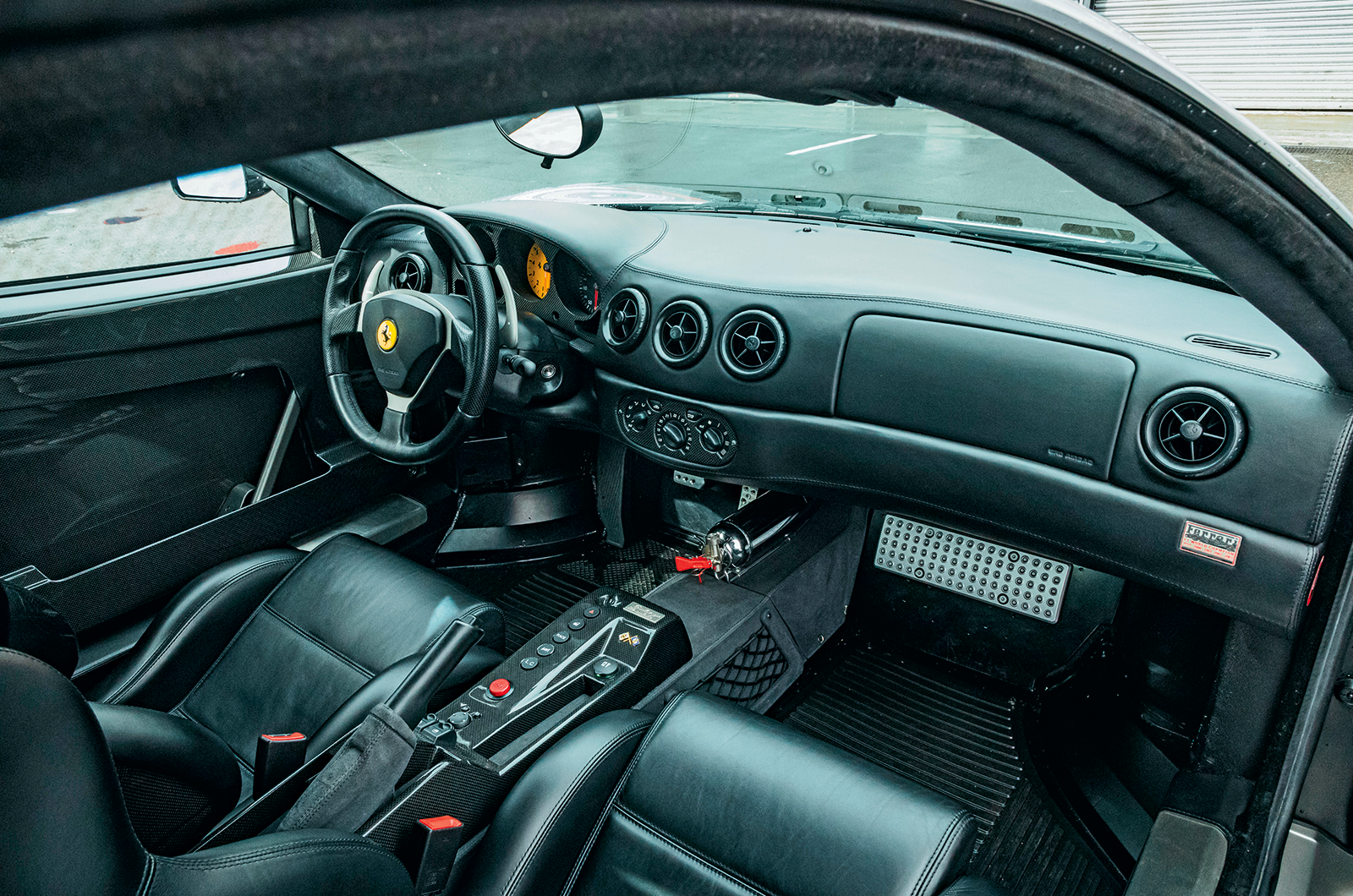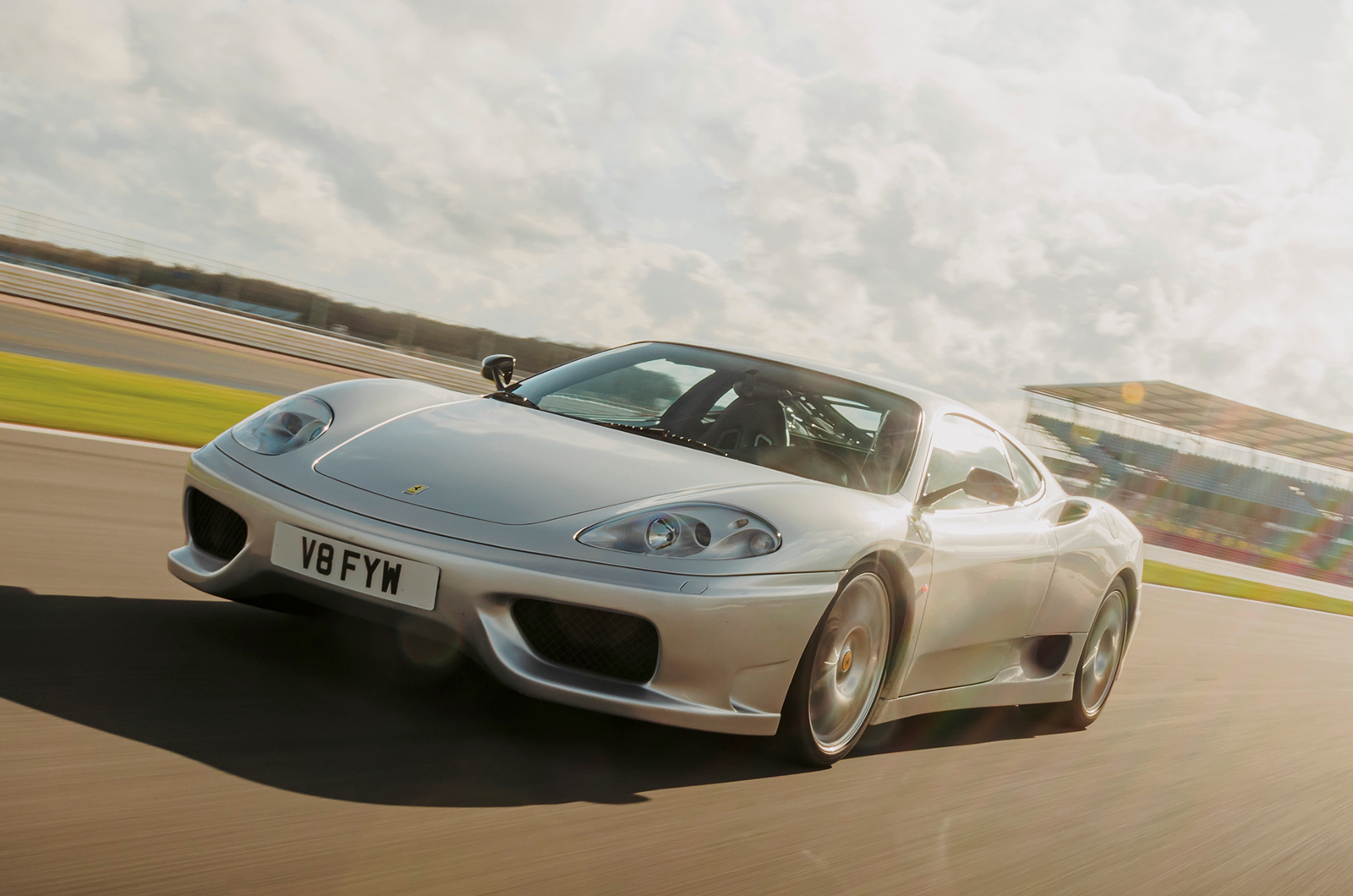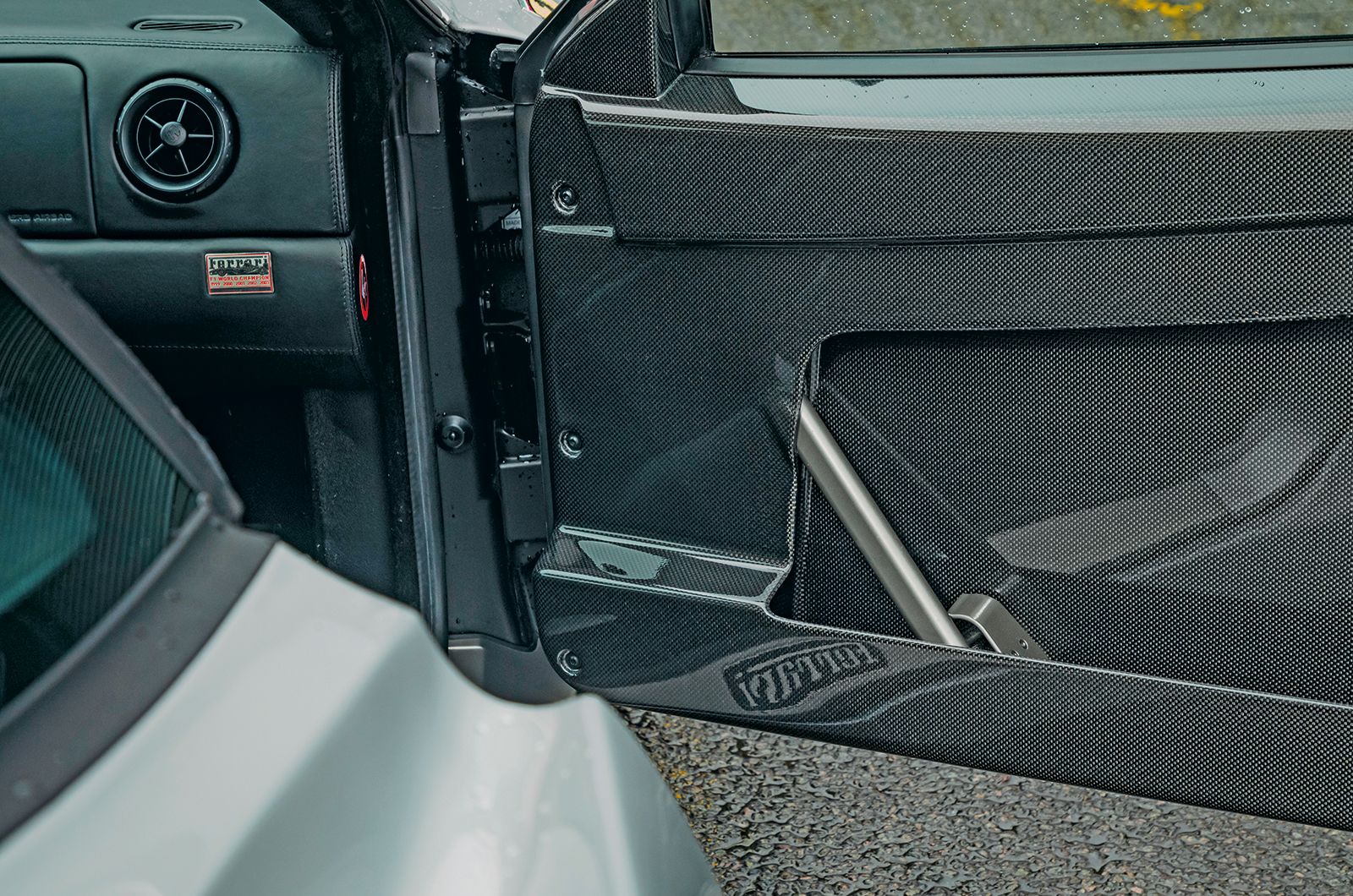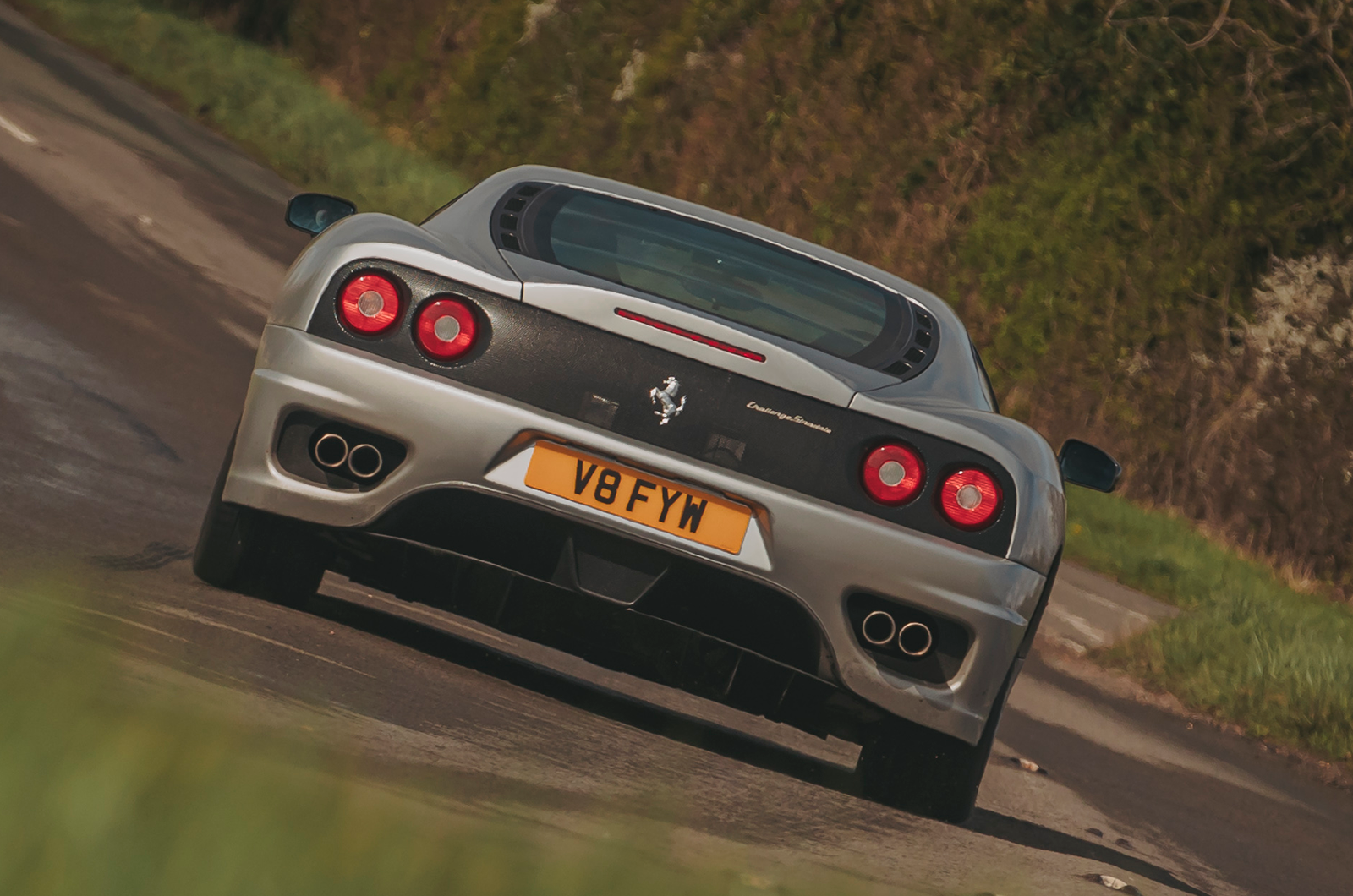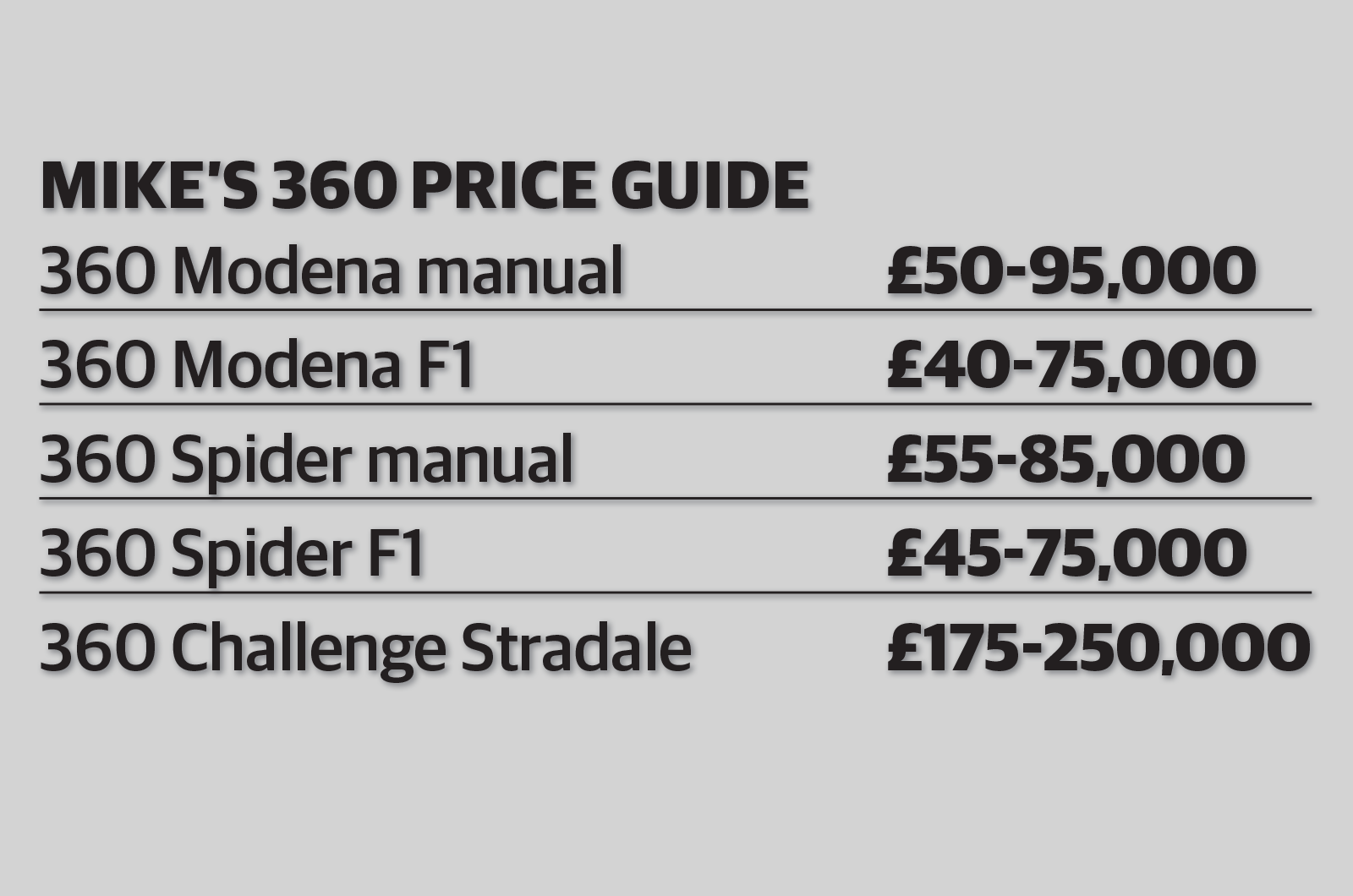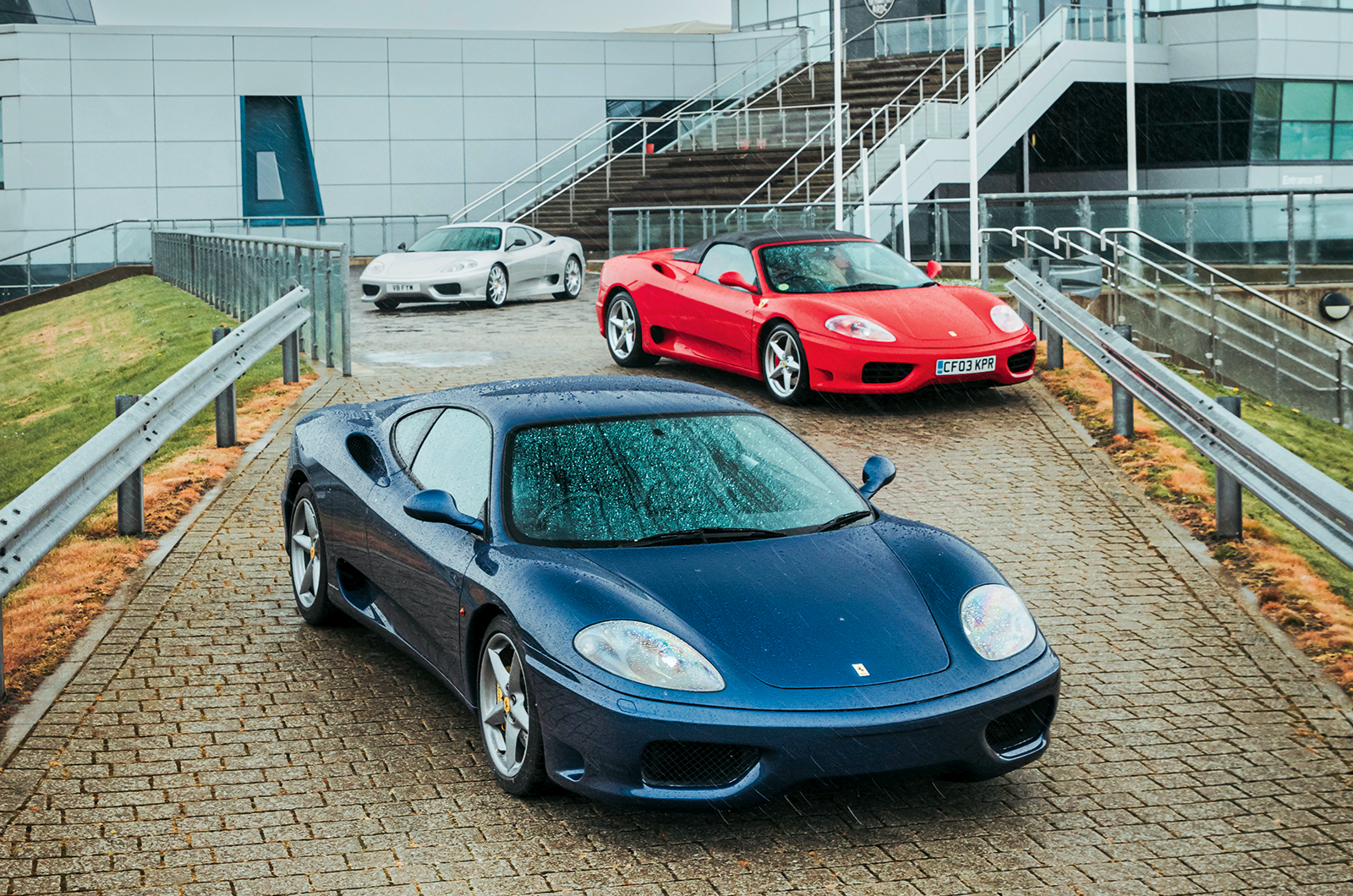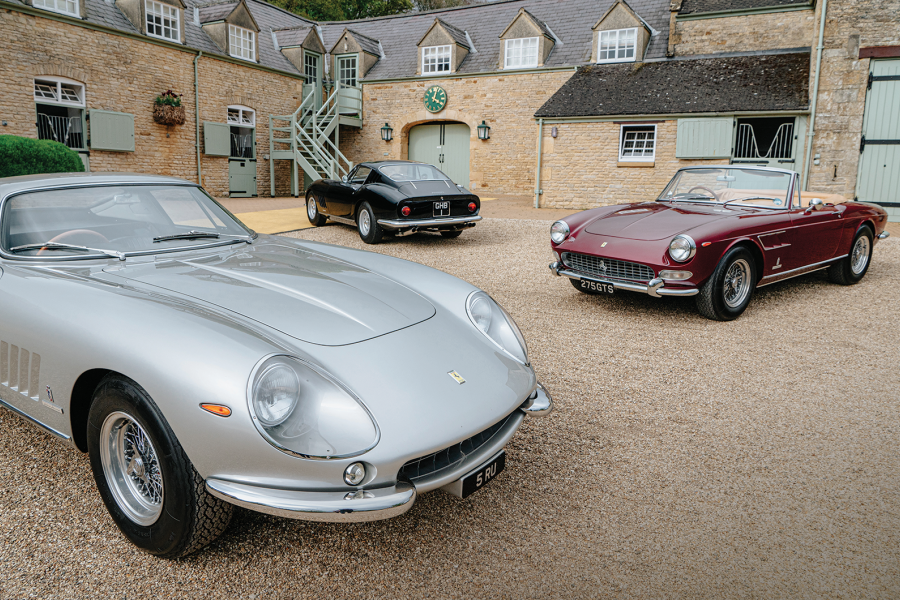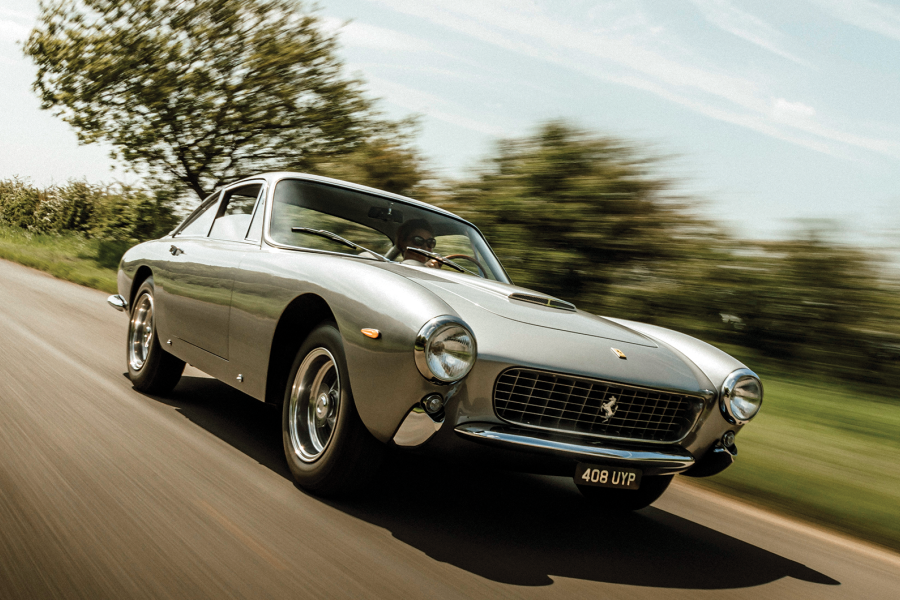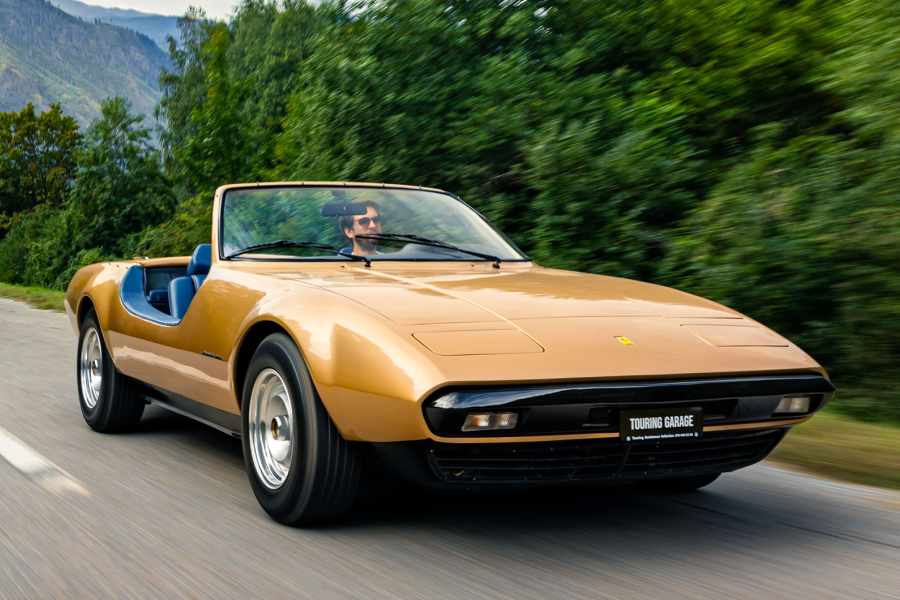Structurally it feels tight, with no rattles or suspension noise, and that adds to the sense of everyday usability.
But this is a Ferrari, so you drive it hard. Response from the long-travel throttle is as immediate as the soulful wail from the V8 that plays in unison.
The engine sounds smaller, busier and more urgent than any other V8, but it’s cultured, too.
It is immensely flexible from low revs, with the feel of a turbocharged mid-range: 6000rpm feels near to peak power, until you realise there’s still another 2500rpm to go.
The Ferrari 360 Spider is best enjoyed when the sun’s out
The F1 transmission works better when you’re really on it in Sport mode, with quicker changes (just 150 milliseconds at above 7000rpm), and downshifts come with a helpful auto-blip to smooth things out.
At the same time, the dampers are stiffened and greater yaw angles are allowed, if you’re in the mood.
Left in Normal, with the transmission in Auto, there is a slight ‘nodding dog’ effect between changes, but that’s easily remedied with a gentle lift of the throttle at the right moment.
The Ferrari 360 Challenge Stradale has racing-car roots
The sight of the open-gate manual gearshift in Chris Higenbottam’s 360 Spider completes the Ferrari experience for me.
Who cares if it’s a little bit slower than the F1?
Launched at the Geneva Salon in March 2000, before the first UK cars arrived in July of that year, the Spider brought many advances over the previous F355 Spider.
It was to be Ferrari’s very first car with a fully automated electric hood mechanism, capable of deployment in a claimed 20 secs (we timed it at 25, including the side-window action).
Ferrari 360 buyers paid a £30k premium for the Challenge Stradale when it was new
The roof operation has a near-balletic quality about it, but once it’s tucked away beneath its body-coloured clamshell cover, the Spider remains a thing of beauty, with its small buttresses behind the rollover hoops bringing some visual relief to the long rear deck.
Three glass wind deflectors – one in each hoop, the other between them – were vital in reducing buffeting, and while some of the visual drama afforded by the Modena’s rear ’screen was lost, a flat glass panel let into the engine cover means that you can still view the Spider’s crackle-red induction system.
Ferrari insisted that compromises for the Spider were few: the reduced space behind the seats could only accommodate soft luggage rather than a set of golf clubs; and there was a 60kg weight penalty thanks to not only the mechanism itself, but also the addition of a crossmember in front of the engine and strengthening to the base of the windscreen (the pillars of which were 30mm shorter).
The Ferrari 360 Challenge Stradale’s engine makes an extra 20bhp and comes only with the F1 gearbox
Overall, though, performance was nigh-on identical to that of the fixed-roof version: a 180mph top speed was still claimed, with a 0-62mph time a 10th of a second slower, at 4.6 secs.
The price rose to £107,500 at launch, around £6000 more than the Modena.
It would have been a price worth paying.
Chris has driven to most of the European F1 Grands Prix in his Spider – now showing 50,000 miles – and reckons buffeting is minimal with the roof open, while the cabin is well sealed with little wind noise when it’s closed.
The paddle-shift gearbox better suits the Ferrari 360 Challenge Stradale
Again, this relatively high-mileage example feels solid and rattle-free, and in terms of dynamics and performance there’s little to choose between it and the closed car.
We happily chat at 70mph as I reacquaint myself with a Ferrari stick shift.
It’s a joy to use – when warm: slick, light and quick through the open gate.
For me, it engages you at a higher level with the car and puts you in mind of classic Ferraris of yore.
Lightweight trim reveals the Ferrari 360 Challenge Stradale’s more focused intent
If there is one small fly in the ointment, it’s the steering: most of the Modena system’s attributes remain, but on lumpy road surfaces the Spider’s column gently trembles, revealing the price paid in the pursuit of open-top 360 motoring.
There was a far bigger price to be paid – at point of purchase, at least – for our final 360.
The Challenge Stradale cost £133,025 at launch in 2003 – almost exactly £30,000 more than the Modena.
That premium did, however, buy you a very different breed of 360.
‘There’s more of everything here. The Ferrari 360 Challenge Stradale would definitely be your weapon of choice provided the road was clear and your focus absolute’
Derived from Ferrari’s 360 Challenge racing car, the CS was significantly lighter and more powerful.
A natural rival for Porsche’s 911 GT3 RS, the CS shed 110kg from the Modena through greater use of carbonfibre, thinner glass and a plastic rear ’screen.
Inside, carbonfibre-backed seats and yet more carbon trim were added, plus much of the soundproofing was removed.
Then, just to show it was really serious, Ferrari fitted carbon-ceramic brake discs, titanium springs, lightweight multi-spoke wheels and even lighter wheelnuts, plucking 5kg from its unsprung mass.
The removal of sound-deadening material affects the Ferrari 360 Challenge Stradale’s door-closing noise
Engines were blueprinted, freer-flowing air intakes were fitted and all CSs came with a redesigned exhaust with less back pressure.
The net result was a 20bhp boost, which, along with the weight-saving, resulted in the 0-62mph time dropping to 4.1 secs, along with an increase in top speed to 186mph.
In reality, the CS’s revisions produced a far more extreme proposition than its on-paper data suggested.
Only around 100 right-hand-drive cars came to the UK, so it’s unsurprising that Tony Williams’ is an imported left-hooker.
The Ferrari 360 Challenge Stradale seats have extra bolstering
Save the wheels and badging, the CS reveals little of its identity from the outside.
But when you drop down into the narrower and more deeply bolstered leather seat, look down at the rubber-matted floor and pull the carbonfibre-trimmed door shut with a ‘clank’ rather than a ‘clunk’, you feel as if you should be turning right out of the paddock and into the pitlane, rather than towards the A413.
With Race mode selected, the CS is primed for maximum attack.
Even at lower speeds there’s a snarl from the V8 that is absent from the Spider and Modena.
The Ferrari 360 Challenge Stradale makes 420bhp
Subjectively, there appears to be less pedal offset sitting on the left, but otherwise comfort and ergonomics are unchanged.
The CS was only available with the F1 ’box, but it’s better-suited to this car than the others.
Gearchanges are brutally quick, and in this mode it’s best to just leave your right foot planted and let the V8’s strident but magnificent bark rip through the cabin.
There’s more of everything here, with greater urge at any revs and no loss of flexibility.
The 360 Modena, Spider and Challenge Stradale reveal why now is the time to buy this brilliant Ferrari
The CS would definitely be your weapon of choice provided the road was clear and your focus absolute.
The steering is even more engrossing, thanks to less weight at each corner, and while its secondary ride can be abrupt, the payback is a level of high-speed control that unwraps the chassis’ full potential.
Only Maranello’s underdogs, such as the 308GT4, the Mondial and the various flavours of 365/400/412GT have been labelled ‘bargain’ Ferraris in recent times – and even these are on the rise.
So it’s heartening to know that, with prices starting from around £40,000, the 360 – one of the most advanced and thoroughly resolved Ferraris of its time – is now able to adopt that same mantle, too.
Images: Max Edleston
Thanks to: Mike Wheeler, Rardley Motors; Ferrari Owners’ Club GB; Silverstone Circuit; Gary Mullins
Ferrari 360 buying guide
Mike Wheeler has been hands-on with the Ferrari 360 since its launch in 1999
Mike Wheeler, of independent Ferrari specialist Rardley Motors, has been dealing with the marque for more than 40 years and has had considerable experience with the 360 since it was launched.
We asked him to explain why the model is such an appealing buy right now, and what to look out for when considering a purchase.
Reliability
“The 360 has stood the test of time well. Interior build quality is good, with only items such as sticky switches sometimes needing replacement – but that’s a straightforward fix.
“The ball-jointed suspension does tend to wear quite quickly, but Hill Engineering makes a replacement part that is of better quality and less expensive.
“The cars are also very durable: my 25-year-old, 75,000-mile Modena still looks more like a cosseted 25,000-miler!”
Service costs
“We charge £780 including VAT for an annual service, and £1680 for a cambelt replacement and service.”
Marque specialist Mike Wheeler’s price guide reveals what Ferrari 360 buyers should be willing to pay (figures correct at date of original publication)
Running costs
“I tell potential owners to allow an average annual budget of £2500 to £3000.
“This would typically cover tyre and brake wear as well as servicing.”
Essentials before buying
“I would recommend having any potential purchase independently inspected by a marque specialist beforehand.
“A full history file is also vital – even if it reveals that a cambelt service was missed 10 years ago; you just need to be able to see that it’s been looked after ever since.”
Manual or F1 transmission?
“The F1 is an automated manual gearbox, so it’s never going to be as smooth as a normal automatic.
“On the upside, it weighs less than a conventional auto and doesn’t come with a power-sapping torque converter.
“The F1 ’box will change gear more quickly than you would be able to in a manual, on faster roads and circuits.
“But for manoeuvring at low speeds, the F1 is more tricky than a manual gearbox.
“Increasingly, I’m being asked to source cars with F1 gearboxes so that owners whose offspring only learnt to drive in an automatic can also get behind the wheel.”
Factfiles
Ferrari 360 Modena
- Sold/number built 1999-2005/8800
- Construction aluminium spaceframe and body
- Engine all-alloy, dohc-per-bank 3586cc V8, Bosch Motronic 7.3 ignition and sequential fuel injection
- Max power 400bhp @ 8500rpm
- Max torque 268lb ft @ 4750rpm
- Transmission six-speed manual or six-speed ‘F1’ automated manual, RWD
- Suspension independent, by double wishbones, coil springs, continuously variable electronic dampers, anti-roll bar f/r
- Steering power-assisted rack and pinion
- Brakes ventilated discs, with servo and ABS
- Length 14ft 8in (4477mm)
- Width 6ft 8in (2050mm)
- Height 3ft 11in (1214mm)
- Wheelbase 8ft 6in (2600mm)
- Weight 3190lb (1447kg)
- Mpg 14.8
- 0-60mph 4.5 secs
- Top speed 184mph
- Price new £101,249
- Price now £40-95,000*
Ferrari 360 Spider
(where different from Modena)
- Sold/number built 2000-’05/7565
- Weight 3322lb (1507kg)
- 0-60mph 4.6 secs
- Top speed 180mph
- Price new £107,500
- Price now £45-85,000*
Ferrari 360 Challenge Stradale
(where different from Modena)
- Sold/number built 2003-’05/1288
- Max power 420bhp @ 8500rpm
- Transmission six-speed ‘F1’ automated manual
- Weight 2947lb (1337kg)
- 0-60mph 4.1 secs
- Top speed 186mph
- Price new £133,025
- Price now £175-250,000*
*Prices correct at date of original publication
Enjoy more of the world’s best classic car content every month when you subscribe to C&SC – get our latest deals here
READ MORE
Aston Martin DB9 vs Ferrari 612 Scaglietti vs Bentley Continental GT: the grand tour
Ferrari 365GT4 2+2 vs 400i vs 412: Maranello’s practical magic
Dino 206GT: the forgotten baby Ferrari
Simon Hucknall
Simon Hucknall is a senior contributor to Classic & Sports Car
